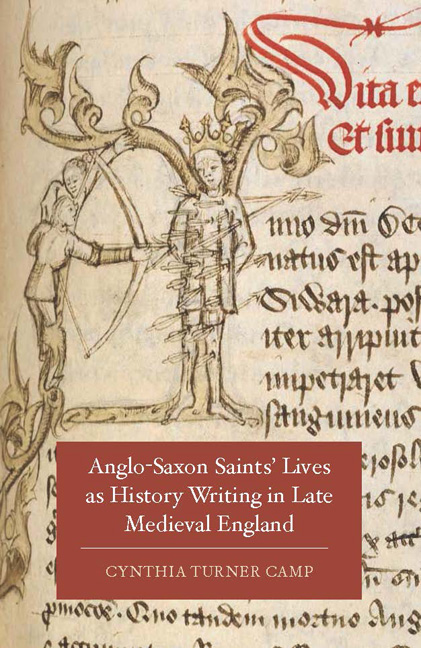Book contents
- Frontmatter
- Dedication
- Contents
- List of Illustrations
- Acknowledgments
- Abbreviations
- Introduction
- 1 Edith of Wilton and the Writing of Women's History
- 2 Audrey Abroad: Spiritual and Genealogical Filiation in the Middle English Lives of Etheldreda
- 3 Henry Bradshaw's Life of Werburge and the Limits of Holy Incorruption
- 4 The Limits of Narrative History in the Written and Pictorial Lives of Edward the Confessor
- 5 The Limits of Poetic History in Lydgate's Edmund and Fremund and the Harley 2278 Pictorial Cycle
- Bibliography
- Index
1 - Edith of Wilton and the Writing of Women's History
Published online by Cambridge University Press: 05 May 2015
- Frontmatter
- Dedication
- Contents
- List of Illustrations
- Acknowledgments
- Abbreviations
- Introduction
- 1 Edith of Wilton and the Writing of Women's History
- 2 Audrey Abroad: Spiritual and Genealogical Filiation in the Middle English Lives of Etheldreda
- 3 Henry Bradshaw's Life of Werburge and the Limits of Holy Incorruption
- 4 The Limits of Narrative History in the Written and Pictorial Lives of Edward the Confessor
- 5 The Limits of Poetic History in Lydgate's Edmund and Fremund and the Harley 2278 Pictorial Cycle
- Bibliography
- Index
Summary
I begin with the lives of three female saints: Edith of Wilton, Audrey of Ely (accompanied by her sisters and nieces), and Werburgh of Chester. For the communities who possessed these saints' relics – and even, as I show in the next chapter, some who didn't – the virgin abbess was a potent figure of institutional cohesion and longstanding purity, the inviolable female body representing the integrity of the religious community formed around her relics. Importantly, all three women also enjoyed a reputation for incorruption; posthumous bodily preservation continued their sexual purity, and the undecayed corpse became an important material conduit through which early English spiritual cachet could manifest, whole and unchanging, throughout time. This integration of incorrupt stability and virginal institutional origins made female saints useful tools through which to write the past. The stasis of bodily incorruption allowed their virginal charisma to manifest within linear history, conveying early English sanctity throughout the generations.
The Middle English life of Edith, the poetic Wilton Chronicle, exemplifies many features common in fifteenth-century hagiography: its imaginative recreation of an Anglo-Saxon past, its grafting of history onto Edith's established hagiography, and its insistence on the corporeal stability of the past. It is also anomalous among these lives: it was written for a female community. Although many vernacular lives were produced for nuns, and many Anglo-French vies can be placed at particular nunneries, the poetic Wilton Chronicle and its companion the Wilton Life of Audrey are the only long Middle English saints' lives produced for a convent we can name today. Anonymously composed around 1420, the Chronicle reconstructs the pre-Conquest past to locate Edith, and by extension Wilton, at the center of England's history and politics. Textually constructing Edith's relics as incorrupt, despite evidence to the contrary, the poet portrays Edith as bodily resolving later conventual conflicts and perpetuates her political role as king's daughter into the reign of Cnut and beyond. Edith's claims to incorruption, however tenuous, also allow her relics to represent metonymically a stable, transtemporal institutional body that supersedes the limitations of individual nuns.
- Type
- Chapter
- Information
- Publisher: Boydell & BrewerPrint publication year: 2015

